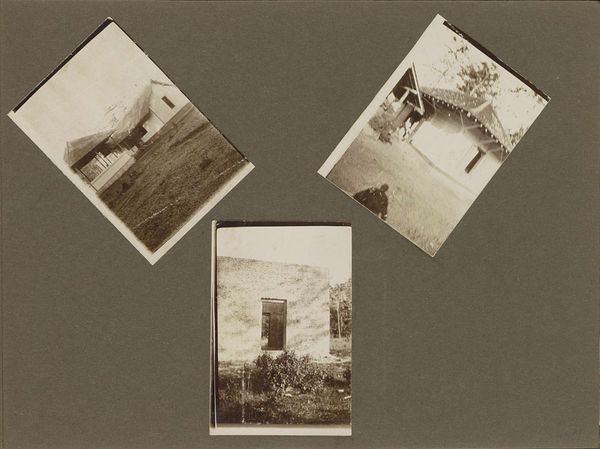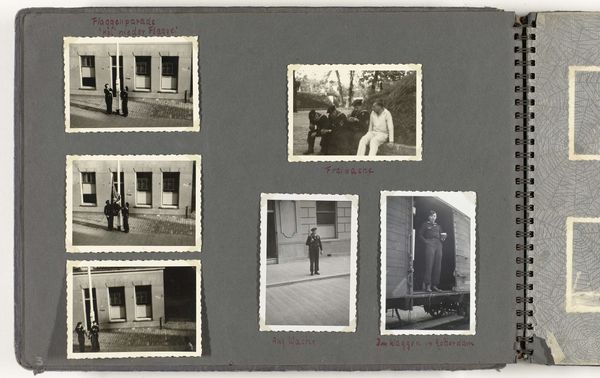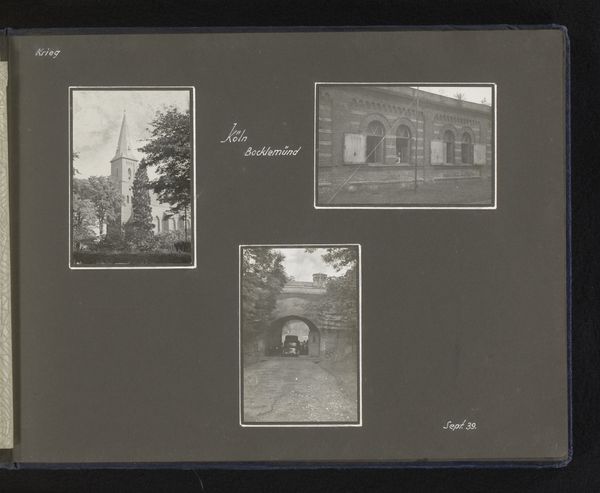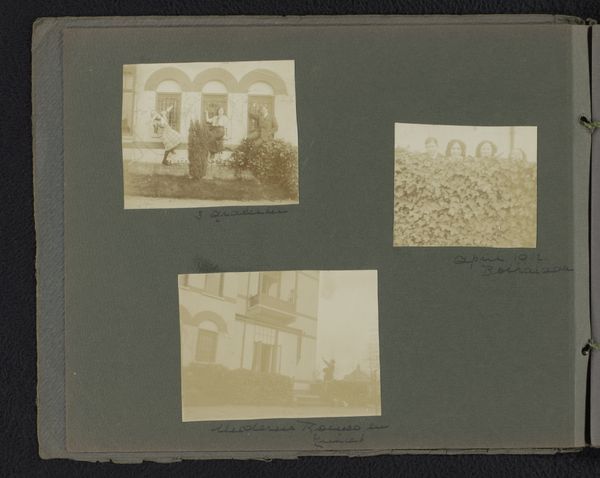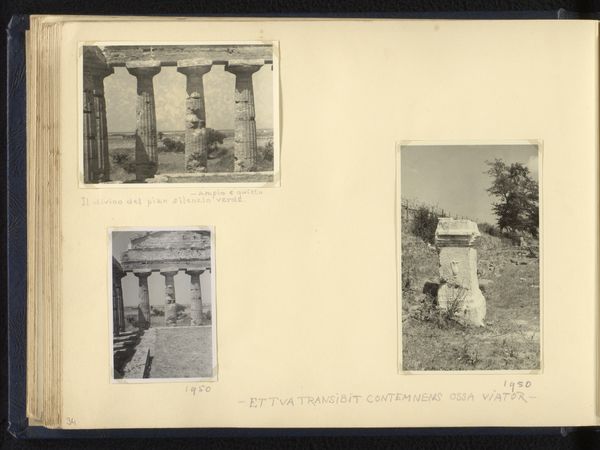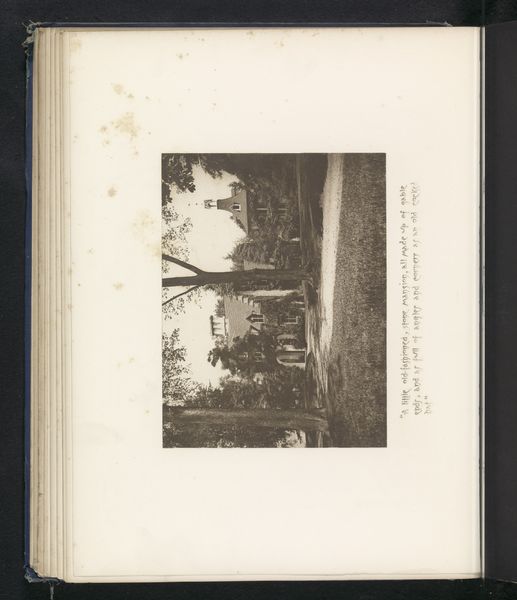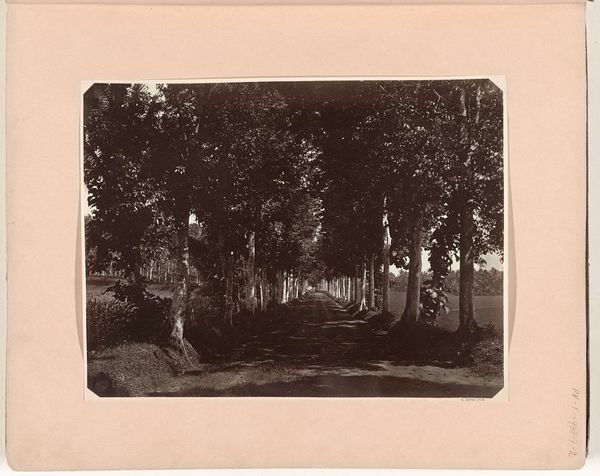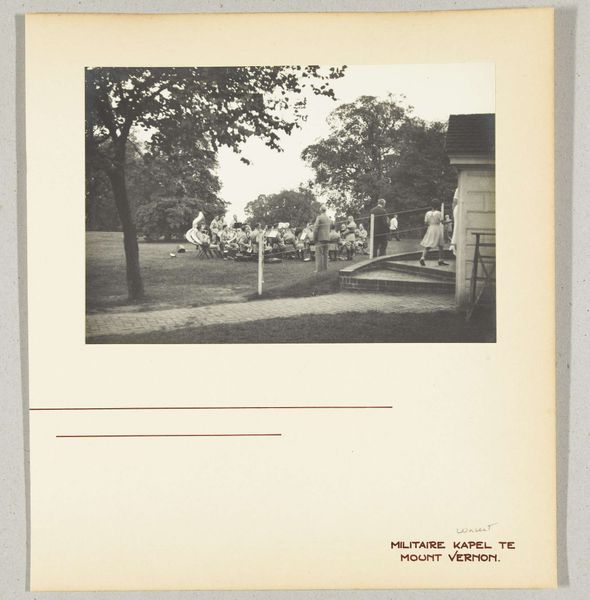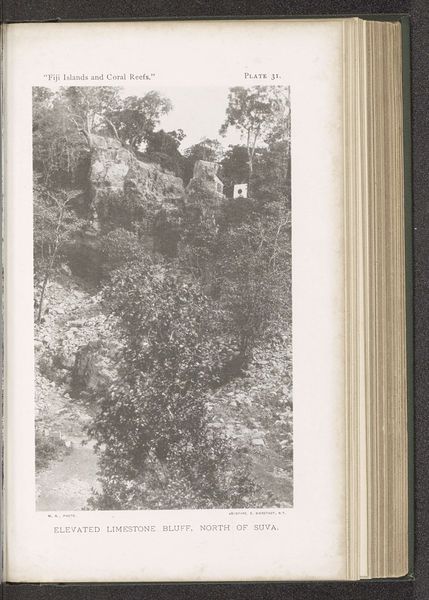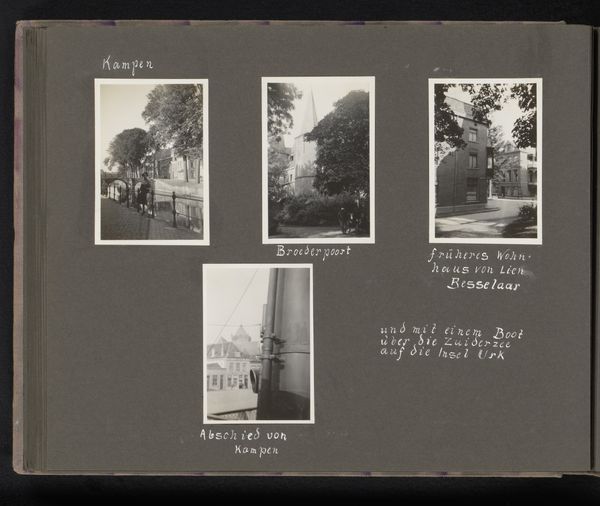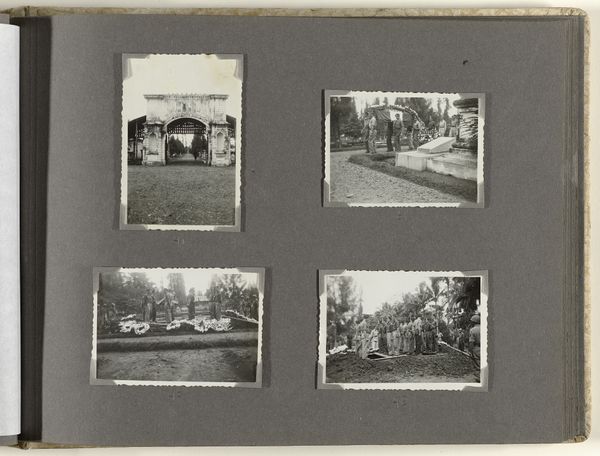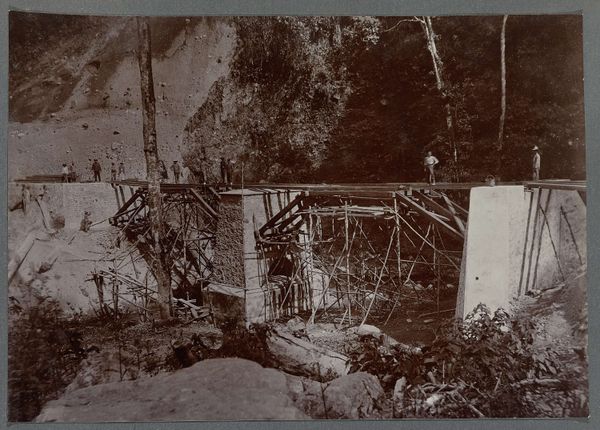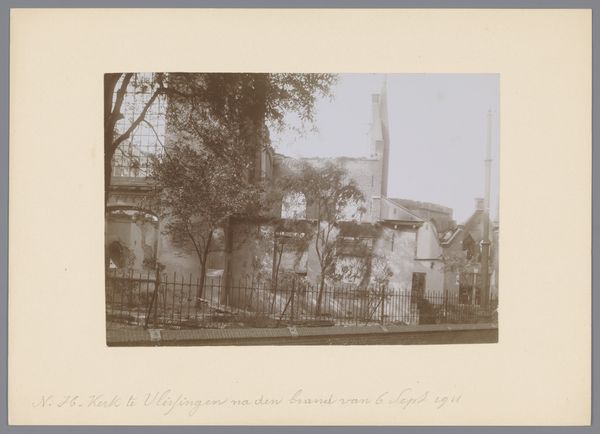
Oude muur van het buitenverblijf van gouverneur-generaal H.W. Daendels in Batavia c. 1920
0:00
0:00
photography, albumen-print
#
landscape
#
photography
#
ancient-mediterranean
#
cityscape
#
albumen-print
Dimensions: height 248 mm, width 305 mm
Copyright: Rijks Museum: Open Domain
Curator: The work before us is an albumen print from around 1920, titled "Oude muur van het buitenverblijf van gouverneur-generaal H.W. Daendels in Batavia," housed right here at the Rijksmuseum. Editor: My immediate reaction is of stillness and decay. It feels like a whisper from the past, shrouded in a sepia-toned silence. Curator: Indeed. The image portrays the remnants of a wall surrounding what was once the country estate of Governor-General Daendels in Batavia, now Jakarta. Considering Daendels' brutal governance and exploitation of Java, the image speaks volumes about colonialism, power, and ruin. The image captures two moments—the top image says ‘Als voren’, or ‘As Before’ capturing some architecture with windows, while the lower image focuses on what is left of Daendel’s wall. The inscription calls out “Goncang Sahari No 21” - “Sahari street No 21”. Editor: And the symbolism of walls… They are always potent, aren't they? This crumbling wall, these lonely columns and architrave speak to the ephemeral nature of power. It's not just a physical structure, but a symbolic one—a boundary, a statement of ownership that ultimately crumbles, returning to dust. The remnants include decorations and scroll-shaped relief structures which might point to something important—perhaps they were looted for wealth. Curator: Precisely! The photograph underscores the transience of colonial dominance. While the physical structures Daendels erected may decay, their presence is deeply embedded within Indonesia's historical trajectory of colonialism and slavery. The question is—who took the photo and what commentary are they trying to provide? How is the photographer linked with those legacies of colonialism? Editor: And within those crumbling stones lie untold stories – stories of those who built it, those who suffered under its shadow, and those who ultimately witnessed its decline. This image offers a space for that reflection. Curator: By showing a single wall, is the photograph suggesting to ‘remember the wall’? Are the windows an entry-point, as it literally opens the gates to the house and therefore suggesting further historical memory. It invites a questioning of whose history is being privileged, and what the role of architectural remains are to historical processes and storytelling. Editor: Looking closely, it evokes such potent associations of historical power and resistance to power in the Dutch East Indies. An invitation into layered reading. Curator: Absolutely.
Comments
No comments
Be the first to comment and join the conversation on the ultimate creative platform.
